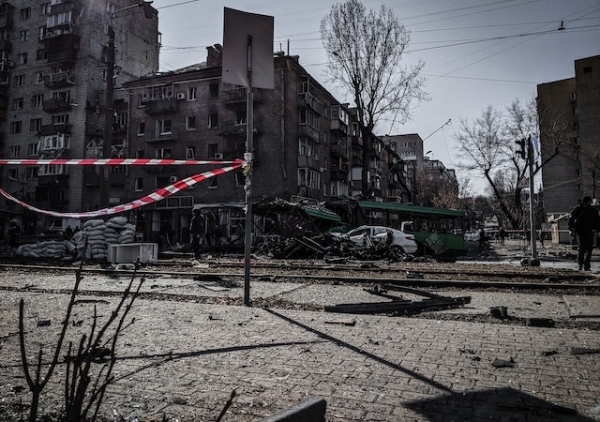In recent days, Human Rights Watch (HRW) has examined video and photographic evidence of at least 40 incendiary attacks by the Russian army in Ukraine.
Incendiary weapons produce heat and fire through the chemical reaction of a flammable substance.
Over the past ten years, incendiary weapons have been the protagonists of major armed conflicts.
Civilians involved in the explosions suffer deep burns at the time of the attack – many times fatal – and lifelong physical, psychological, and socio-economic suffering.
The United Nations Convention on Certain Conventional Weapons (CCW), adopted in Geneva in 1980, prohibits or restricts the use of certain conventional weapons. In particular, Protocol III represents the only legal instrument that regulates the use of incendiary weapons. It regulates its use in “concentrations of civilians” and in “forests and other types of vegetation cover”.
Protocol III defines an incendiary weapon as “any weapon or munition which is primarily designed to set fire to objects or to cause burn injury to persons through the action of flame, heat, or combination thereof, produced by a chemical reaction of a substance delivered on the target”.
Furthermore, the Protocol includes among the incendiary weapons mainly identified – and used – in conflicts “flame throwers, fougasses, shells, rockets, grenades, mines, bombs and other containers of incendiary substances”.
In the definition of incendiary weapons there are two contradictory and incomplete elements that undermine its effectiveness as powerful protection for civilians involved in the explosion.
The first element concerns the incompleteness of the definition: some multipurpose munitions with incendiary effects are absent from the aforementioned list. The second lack concerns the way in which incendiary weapons are used. The protocol prohibits their use by air in civilian concentrations but applies minor restrictions to the same weapons used on the ground - although there is no difference in the effects produced.
Regarding the first deficiency, the Protocol’s wording “any weapon or munition which is primarily designed […]” excludes multipurpose munitions, constructed to produce other effects beyond the incendiary purpose (for example, illuminating, tracer, smoke or signaling systems).
Among these multipurpose munitions, not limited by the text of the Protocol, there are incendiary devices containing white phosphorus. These are, in fact, mainly designed for other purposes but can cause the same effects as the other incendiary weapons on the Protocol list.
The only permitted use of white phosphorus is to illuminate an area of land, scare the enemy or create a smoke screen; on the other hand, its use on civilians is categorically prohibited.
Despite this, the images shared by HRW shows the Russian use of white phosphorus on civilians.
Over the past fifteen years, HRW has documented the use of incendiary weapons in Afghanistan, Gaza, Syria, Yemen, and Ukraine and reported the testimonies of civilian survivors of these weapons.
In its report, conducted together with the Harvard Human Rights Clinic, the two organizations tried to reset the debate on the subject, highlighting the enormous human cost of using these weapons.
The humanitarian approach to the issue demonstrates the need to urgently revise and strengthen the gaps in the legislation.
The international debate for the revision and strengthening of Protocol III began in 2017 at the Meeting of the member states of the CCW. The reform plan was immediately blocked due to the lack of consent of the United States and Russia and was also canceled from the subsequent agendas of 2019 and 2020. In 2021 and at the end of 2022 it was again postponed.
The use of incendiary weapons is still widespread in armed conflicts. Civilians in the affected areas or neighboring areas are the first to suffer the consequences. According to HRW researcher Bonnie Docherty, the testimonies of civilian survivors should stimulate governments to promote wider and more effective legislation on the subject: “Governments should urgently address the horrific effects of incendiary weapons and make addressing their humanitarian concerns a top priority”.
To learn more, visit:
- https://www.losservatorio.org/it/temi/disarmo-umanitario/item/3203-armi-incendiarie
- https://humanitariandisarmament.org/wp-content/uploads/2021/10/Factsheet-on-Incendiary-Weapons.pdf
- https://www.hrw.org/news/2022/03/17/qa-incendiary-weapons-ukraine
- https://www.hrw.org/news/2022/11/08/protect-civilians-incendiary-weapons
- https://www.hrw.org/report/2020/11/09/they-burn-through-everything/human-cost-incendiary-weapons-and-limits
by Federica Tognolli







